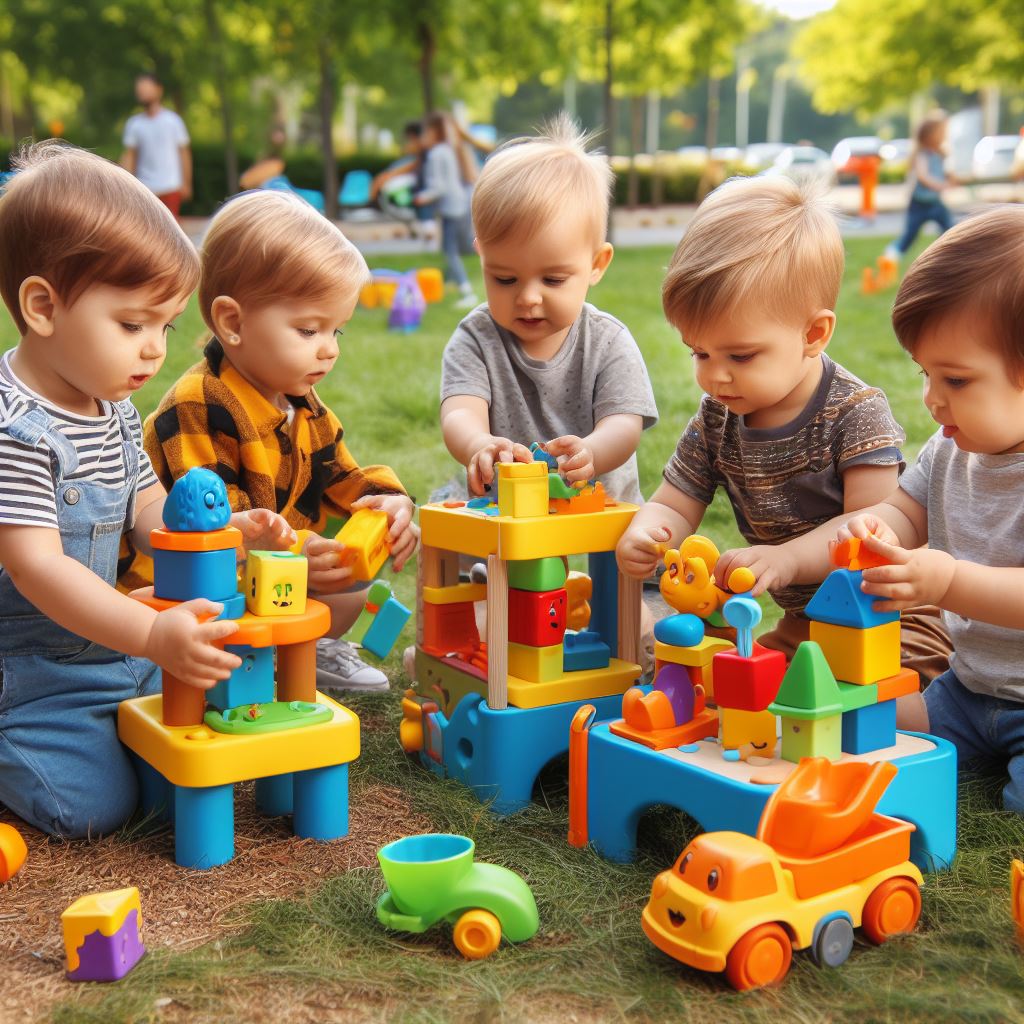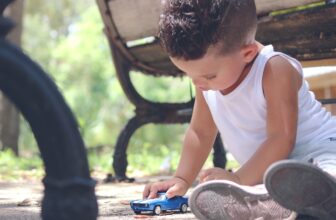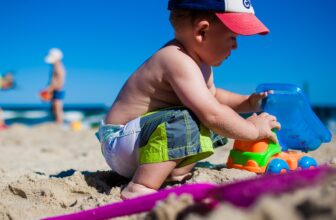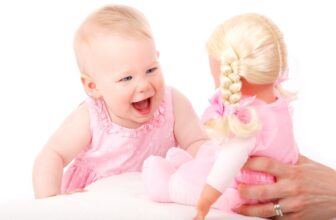
Looking for the best toys for your little one who is turning one? Look no further! In this article, you will find a handpicked selection of top toys specifically designed for 1-year-olds. From interactive and educational toys to cuddly plushies and stimulating puzzles, we’ve got you covered. These toys will not only keep your child entertained for hours but also foster their cognitive and motor skills development. Excited to see which toys made the cut? Let’s jump right in!
Educational Toys
Stacking toys
Stacking toys are great for developing your child’s hand-eye coordination and fine motor skills. These toys typically come with colorful blocks or rings that your child can stack on top of each other. As your child grows, they can learn about size, shape, and balance by experimenting with different stacking combinations. Stacking toys also encourage problem-solving skills and cognitive development as your child figures out how to make the tower stay balanced.
Shape sorters
Shape sorters are perfect for helping your child learn about shapes and colors. These toys usually have a box with holes of different shapes and come with corresponding blocks that fit through the holes. Your child can practice their hand-eye coordination by sorting the blocks and matching them to the appropriate hole. Shape sorters also aid in the development of problem-solving skills and spatial awareness as your child figures out which shape goes where.
Puzzles
Puzzles are not only fun but also provide numerous cognitive benefits for your child’s development. They help improve problem-solving skills, hand-eye coordination, and shape recognition. Puzzles for 1-year-olds typically have large, chunky pieces that are easy for little hands to grasp. Look for puzzles that feature familiar objects or animals to engage your child’s interest and help them learn about the world around them.
Sensory Toys
Texture balls
Texture balls are excellent toys for stimulating your child’s senses. They come in various sizes, colors, and textures, providing tactile exploration for your little one. Your child can feel the different textures with their hands or even explore the balls with their mouth, which helps with oral sensory development. Texture balls are also great for developing fine motor skills as your child tries to grip and manipulate the balls.
Musical toys
Introduce your child to the world of music with musical toys. From simple maracas to toy keyboards, these toys can help your child develop rhythm, coordination, and an appreciation for sound. Musical toys often feature bright colors and interactive buttons, encouraging your child to explore cause and effect. By pressing different buttons or shaking the toys, your child can create their own melodies and learn about cause and effect relationships.
Sensory boards
Sensory boards are designed to engage your child’s senses and promote sensory exploration. These boards typically have various textures, colors, and objects attached to them, providing opportunities for tactile, visual, and auditory stimulation. Your child can touch different textures, move objects, and discover hidden surprises on the sensory board. Sensory boards can also help with fine motor skills as your child learns to manipulate the objects on the board.
Construction Toys
Building blocks
Building blocks are classic toys that encourage creativity, problem-solving, and fine motor skills. Your child can stack and build various structures using different shapes and sizes of blocks. Building with blocks helps develop hand-eye coordination, spatial awareness, and logical thinking. Your child can experiment with balance and gravity as they create towers and explore cause and effect relationships when their structures tumble down.
Pop-up toys
Pop-up toys are entertaining and educational toys that promote hand-eye coordination and finger dexterity. These toys feature buttons or levers that your child can press or pull to make surprises pop up. Pop-up toys often have friendly characters or animals that capture your child’s attention, providing opportunities for imaginative play. As your child interacts with the toys and discovers the cause and effect relationships, they develop their problem-solving skills and understanding of spatial relationships.
Stacking cups
Stacking cups are versatile toy that can be used for various activities as your child grows. Initially, your child can stack the cups on top of each other, exploring size relationships and improving hand-eye coordination. As they get older, your child can use the cups for pouring and water play, practicing fine motor skills, and learning about cause and effect. Stacking cups can also be used for sorting and nesting activities, teaching your child about size, shape, and spatial relationships.
Imaginative Play Toys
Dolls and stuffed animals
Dolls and stuffed animals provide endless opportunities for imaginative play and emotional development. Your child can cuddle, care for, and role-play with their doll or stuffed animal, fostering empathy and social skills. These toys also encourage language development as your child communicates with their “friends.” Look for dolls or stuffed animals that are soft and washable, ensuring your child’s safety and making it easy to keep them clean.
Play kitchen sets
Play kitchen sets are perfect for encouraging pretend play and developing important life skills. Your child can imitate cooking, baking, and serving food, which promotes creativity and role-playing. Play kitchen sets often come with pots, pans, utensils, and play food, allowing your child to practice fine motor skills and explore different textures and shapes. As they engage in pretend play, your child’s imagination and social skills can flourish.
Toy cars and trucks
Toy cars and trucks are beloved by many children and provide ample opportunities for imaginative play. Your child can create their own little world as they push their cars around, pretending to drive and explore. Whether it’s racing, building a city, or going on an adventure, toy cars and trucks allow your child to use their imagination and storytelling abilities. These toys also help develop fine motor skills as your child pushes, pulls, and manipulates the vehicles.
Outdoor Toys
Push toys
Push toys are perfect for encouraging physical activity and developing gross motor skills. These toys often have a sturdy handle that your child can hold onto while pushing the toy forward. Push toys provide stability and support as your child practices walking and running. Some push toys also have interactive elements, such as buttons or balls that light up or make sounds, adding an extra level of engagement and excitement.
Ride-on toys
Ride-on toys are a fantastic way to get your child active and moving outdoors. From mini tricycles to ride-on cars, these toys allow your child to explore their surroundings while developing their gross motor skills. Riding a tricycle or a ride-on toy promotes coordination, balance, and leg strength. Look for ride-on toys that are appropriate for your child’s age and size, ensuring their safety and comfort during play.
Sand and water tables
Sand and water tables are excellent for sensory play and outdoor exploration. These tables typically have designated areas for sand and water, allowing your child to dig, scoop, pour, and splash. Sensory experiences with sand and water can be incredibly stimulating for your child’s senses and encourage imaginative play. Sand and water tables also provide opportunities for fine motor skill development as your child scoops and pours with various tools and containers.
Fine Motor Skills Toys
Shape sorters
Shape sorters are not only educational toys but also fantastic for developing fine motor skills. As your child manipulates the blocks or shapes, they can practice their hand-eye coordination and finger dexterity. Shape sorters also promote problem-solving skills and cognitive development as your child figures out which shape fits where. Look for shape sorters with chunky pieces that are easy for your child to grasp and manipulate.
Bead mazes
Bead mazes are captivating toys that enhance hand-eye coordination and fine motor skills. These toys usually consist of tracks with colorful beads that your child can move along the wires. As your child maneuver the beads through the maze, they develop their hand-eye coordination and finger grasping skills. Bead mazes also promote cognitive skills as your child learns about cause and effect relationships and problem-solving.
Activity cubes
Activity cubes are versatile toys that offer a range of activities to stimulate your child’s fine motor skills. These cubes often have different sides with various features, such as shape sorting, bead mazes, spinning gears, and more. Your child can twist, turn, and manipulate the activities, promoting finger dexterity and cognitive development. Activity cubes also encourage problem-solving skills as your child figures out how each feature works and interacts with others.
Cause and Effect Toys
Light-up toys
Light-up toys are engaging and entertaining for young children while also promoting cause-and-effect understanding. These toys typically have buttons or switches that activate colorful lights or sounds. As your child presses the buttons and sees the lights or hears the sounds, they learn about cause-and-effect relationships. Light-up toys can help develop hand-eye coordination as your child tries to push the buttons and reinforce fine motor skills.
Musical instruments
Musical instruments are excellent for introducing your child to the world of music and rhythm. From small drums to xylophones, these toys allow your child to create their own melodies and experience cause-and-effect relationships. Your child can experiment with different sounds and learn about rhythm and coordination. Musical instruments also foster creativity and self-expression as your child discovers the joy of making music.
Hammering toys
Hammering toys provide endless fun while promoting hand-eye coordination and fine motor skills. These toys often have colorful pegs or balls that your child can hammer down through holes using a mallet or hammer. As your child hammers, they develop their hand-eye coordination, grip strength, and finger dexterity. Hammering toys also teach cause-and-effect relationships, as the pegs or balls push through the holes with each successful strike.
Interactive Toys
Activity centers
Activity centers are comprehensive toys that offer multiple interactive elements to engage your child’s curiosity and development. These toys typically have buttons, switches, gears, and other features that your child can manipulate and explore. Activity centers can help develop fine motor skills and hand-eye coordination as your child interacts with the different activities. They also promote cognitive skills, problem-solving abilities, and cause-and-effect understanding.
Educational tablets
Educational tablets designed for young children provide interactive learning experiences through games, music, and educational content. These tablets often have touch screens and colorful displays, capturing your child’s attention and promoting fine motor skills as they interact with the screen. Educational tablets offer various activities that target cognitive development, letter and number recognition, and problem-solving skills. They can be a great tool for early learning and entertainment.
Toy cell phones
Toy cell phones are popular pretend play toys that allow your child to imitate and engage in conversation. These phones often have buttons that make sounds, play songs, or activate voices. As your child presses the buttons and hears the sounds, they develop their hand-eye coordination and finger dexterity. Toy cell phones also encourage imaginative play, social skills, and language development as your child pretends to have conversations and imitate real-life scenarios.
Books
Touch-and-feel books
Touch-and-feel books are perfect for engaging your child’s senses and promoting early literacy. These books often have different textures on each page for your child to explore by touching and feeling. By experiencing different textures, your child develops their tactile senses and enhances sensory awareness. Touch-and-feel books can also introduce basic concepts such as colors, shapes, and animals, fostering early cognitive development.
Board books
Board books are a must-have for little ones as they are sturdy and durable. These books have thick pages made from cardboard, making them perfect for your child to hold, turn, and explore without easily tearing the pages. Board books often feature simple, colorful illustrations that capture your child’s attention and introduce them to various topics. Reading board books together promotes bonding, language skills, and a love for reading.
Picture books
Picture books are fantastic for stimulating your child’s imagination and expanding their vocabulary. These books often have vibrant illustrations that tell stories or depict scenes from everyday life. They can introduce your child to new words and concepts, encouraging language development and storytelling abilities. Picture books also provide opportunities for parent-child interaction and shared reading experiences, fostering a love for books and learning.
Bath Toys
Bath squirters
Bath squirters are excellent for making bath time enjoyable while promoting fine motor skills and coordination. These toys are designed to be squeezed and filled with water, allowing your child to squirt and splash during bath time. Bath squirters come in various shapes and sizes, such as animals or objects, adding a fun element to bath play. By manipulating the squeeze toys, your child develops hand strength and finger control.
Stacking cups
Stacking cups can also be used as bath toys, providing versatile play options for your child. In the bath, your child can fill and pour water using the cups, promoting hand-eye coordination and water exploration. Stacking cups also enhances fine motor skills as your child learns to grip, stack, and nest the cups. These toys are easy to clean and can be used in various water play activities, making bath time an engaging and educational experience.
Floating boats
Floating boats are delightful toys for bath time that captivate your child’s attention and imagination. These toys typically float in the water, encouraging your child to engage in storytelling and pretend play. Your child can create adventures and explore cause-and-effect relationships as they push the boats through the water. Floating boats also help develop hand-eye coordination as your child manipulates and moves the toys around in the bath.







